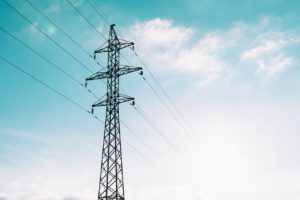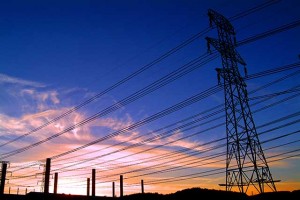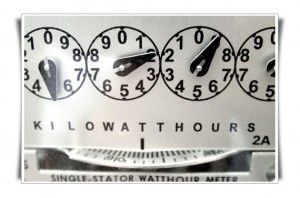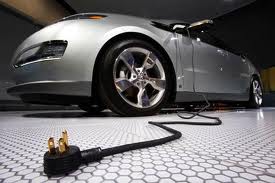12 item(s) were returned.
Executive Director
Energy Choice Coalition
The rapid evolution of the electricity sector in the United States can offer numerous benefits to consumers while also addressing society’s environmental concerns. The rise of independent energy suppliers and the advancement of information technology are transforming the way we generate and manage our electricity use, allowing consumers to access more affordable, diverse, efficient, and cleaner sources of energy. More than a dozen states have restructured their electricity markets to some degree in order to give consumers, large and small, a greater say in the type of energy they use every day to power their homes and offices. Proper policy… [more]
View InsightLead Communications Consultant
Duke Energy
Industry experts recently testified before Congress that more needs to be done to protect the nation’s electric grid from natural disasters, cyberattacks, physical threats and planned sabotage. Recent news stories have highlighted grid security issues, including analysis by USA Today that claims the U.S. Department of Energy’s computer systems were compromised more than 150 times between 2010-2014. And while cybersecurity is a persistent threat, physical damage to “critical infrastructure” facilities from severe storms, flooding, wildfires, and even shootings, has the potential for extensive, long-duration outages: Critical high-voltage substations, while representing only 3% of all substations, carry the bulk of the… [more]
View InsightA battle is heating up in California regarding the State’s net metering policy as the California Public Utilities Commission is reviewing the policy’s costs and benefits. Net metering is an incentive that allows consumers who produce their own electricity, from rooftop solar panels for example, to sell excess back to the grid (often) at full retail price. Opponents of net metering contend that the volumetric retail rate includes fixed costs that are essential to the long-term stability of our utility infrastructure. They claim that net metering customers get the benefit of using the grid, but pay less to do so… [more]
View InsightOn April 17th, US DOE released a report titled An Assessment of Energy Potential at Non-Powered Dams in the United States. The report analyzes the hydroelectric power generating capacity at 54,000 existing dams across the United States, and indicates that fully developing non-powered dams (NPDs) could result in additional generating capacity of more than 12 gigawatts (GW). This would increase current US hydropower capacity by 15% and provide enough energy to power four million households. The report concludes that of the 12 GW of potential capacity, “a majority is concentrated in just 100 NPDs, which could contribute approximately 8 GW… [more]
View InsightOn March 13th, C2ES held a panel discussion in Washington, DC titled “Electric Vehicles Plugging into the U.S. Grid.” The panel addressed the opportunities and challenges surrounding broad roll-out of plug-in electric vehicles (PEVs). A key point of discussion was the need for harmonization between the auto industry, utilities, and government so as to optimize the electric grid as PEVs become a larger proportion of the vehicle fleet. Another key point was the need for consumers that are well-educated on PEVs. What’s keeping PEVs, and other alternative fuel cars, from breaking into the market? Is it simply a lack of… [more]
View InsightNote: Synopsis adapted by OurEnergyPolicy.org from APS press materials and report’s executive summary. Synopsis intended solely for purposes of generating discussion. Integrating Renewable Electricity on the Grid By the American Physical Society Panel on Public Affairs The United States has ample renewable energy resources. Land-based wind, the most readily available for development, totals more than 8000 GW of potential capacity. The capacity of concentrating solar power is nearly 7000 GW in seven southwestern states. To date, 30 states plus the District of Columbia have established Renewable Portfolio Standards (RPS) to require a minimum share of electrical generation produced by renewable… [more]
View InsightNote: Synopsis based U.S. DOE summary provided to OurEnergyPolicy.org. Complete text US DOE Mission and Goals The mission of the Department of Energy is to ensure America’s security and prosperity by addressing its energy, environmental, and nuclear challenges through transformative science and technology solutions. Goal 1: Catalyze the timely, material, and efficient transformation of the nation’s energy system and secure U.S. leadership in clean energy technologies. Goal 2: Maintain a vibrant U.S. effort in science and engineering as a cornerstone of our economic prosperity with clear leadership in strategic areas. Goal 3: Enhance nuclear security through defense, nonproliferation, and environmental… [more]
View InsightNote: Synopsis based on OurEnergyPolicy.org review of Congressional committee and office summaries, third party analyses, and media summaries. Synopsis intended solely for the purposes of generating discussion. Federal Energy Planning Would require a new comprehensive Federal energy plan one year into each new Presidential term. Emergent Energy Technology Investment Would establish the Clean Energy Deployment Administration to facilitate financing for clean energy technologies and expand the U.S. market for such technologies. Would establish a 4-year integrated plan to double the U.S. investment in energy innovation and technology, to a total of almost $6.6 billion, with a complementary set of programs… [more]
View Insight[Note: The statements below are intended solely to stimulate discussion among the Expert community, and do not represent the position of OurEnergyPolicy.org. Text in italics indicates clarification or expansion.] One of the major roadblocks to the implementation of a national energy policy is the difference between federal, state and local agendas. Our energy policy is now an essential part of our national security. When it comes to “classical security” (i.e., DOD), the federal government enjoys greater power over state and local government (although not absolute). It is now time to increase the power of the federal government when it… [more]
View Insight[Note: The statements below are intended solely to stimulate discussion among the Expert community, and do not represent the position of OurEnergyPolicy.org. Text in italics indicates clarification or expansion.] The U.S. electrical grid is 50-80 years old. It is based on old technology and the infrastructure is old. It does not meet the needs of our modern energy use: It is the single largest source of wasted energy – improvement to the grid could easily save 20% of electricity. We need better design and additional transmission lines. There are many “waste areas”. Correcting the major ones can save 10%… [more]
View Insight


